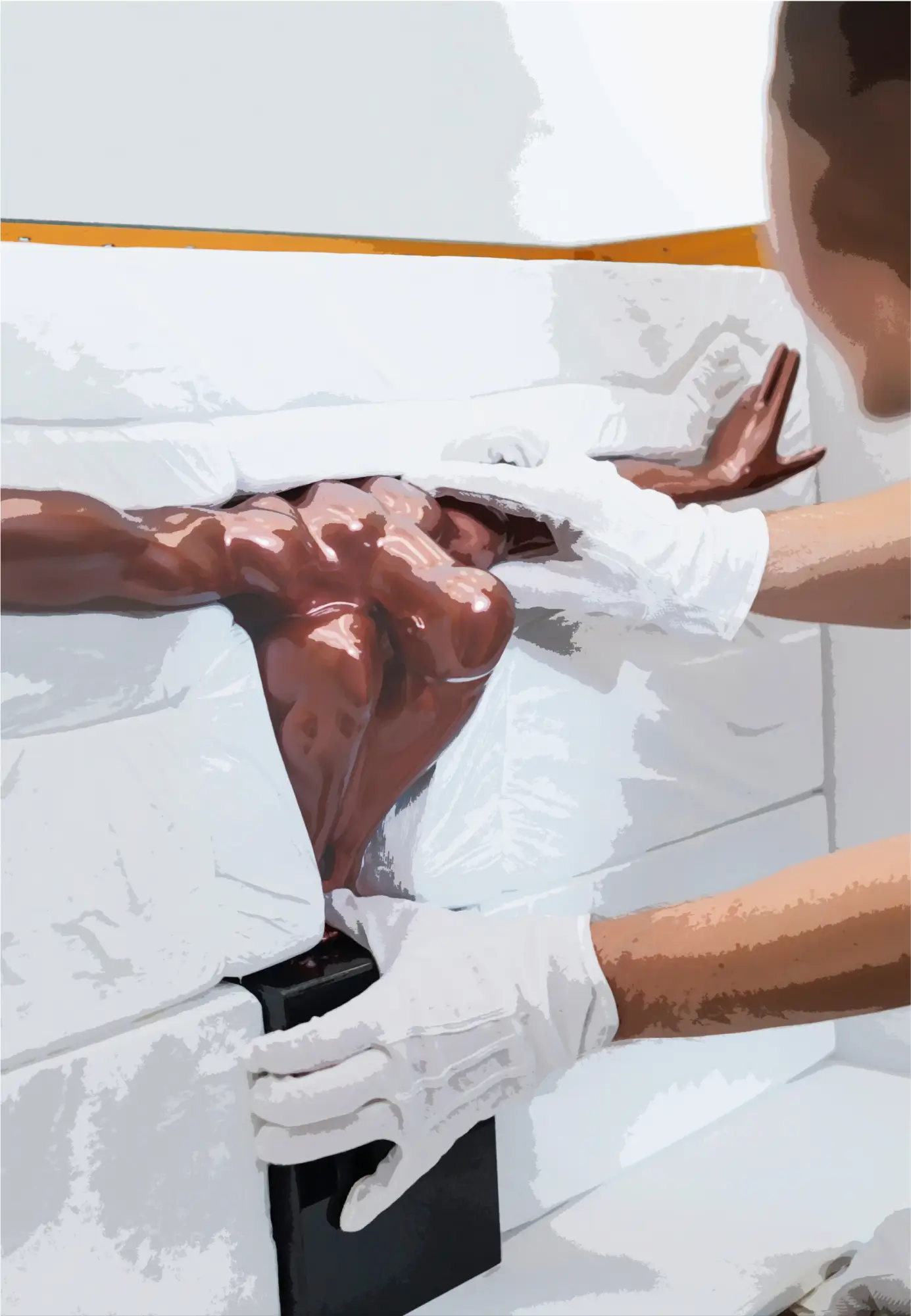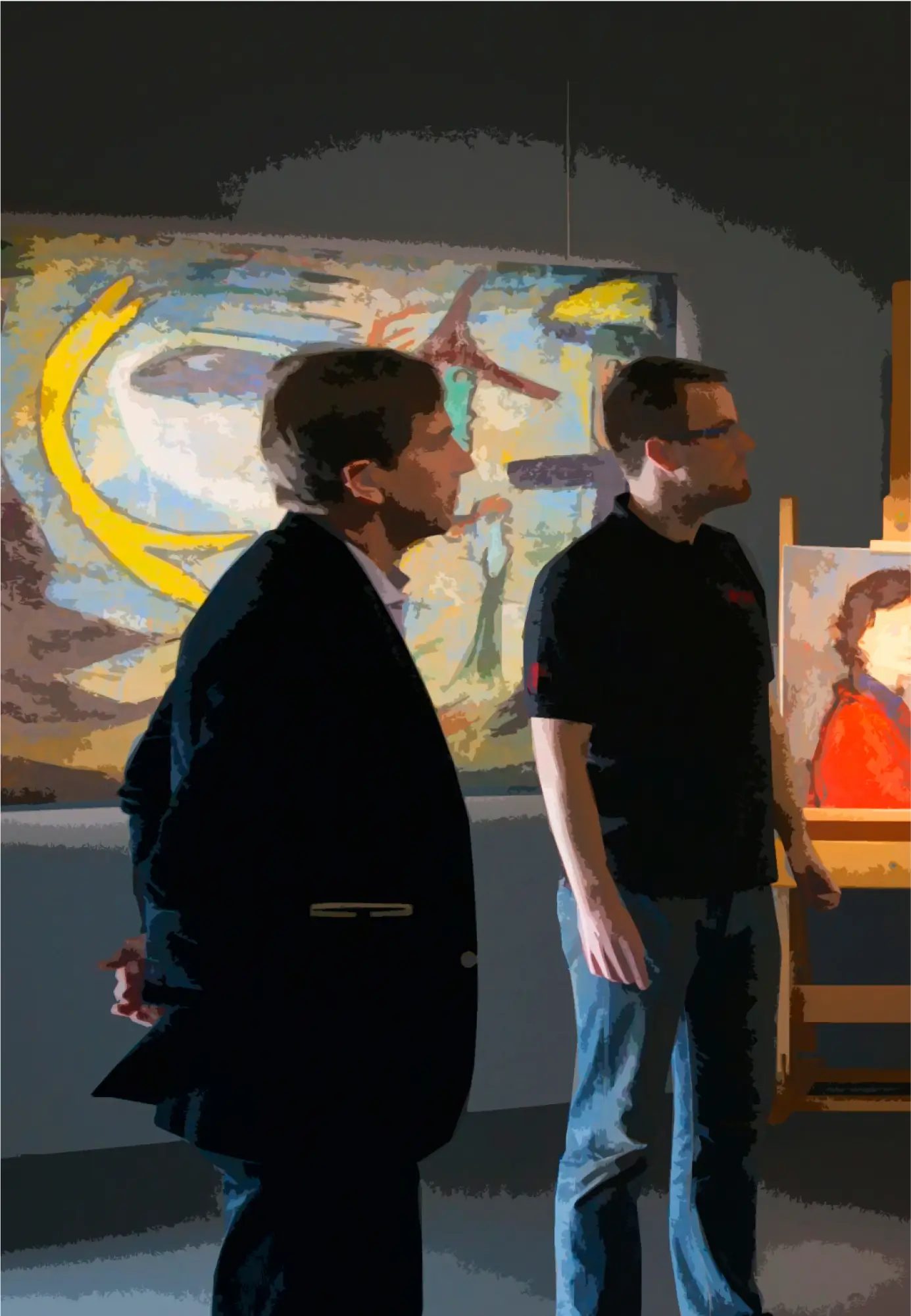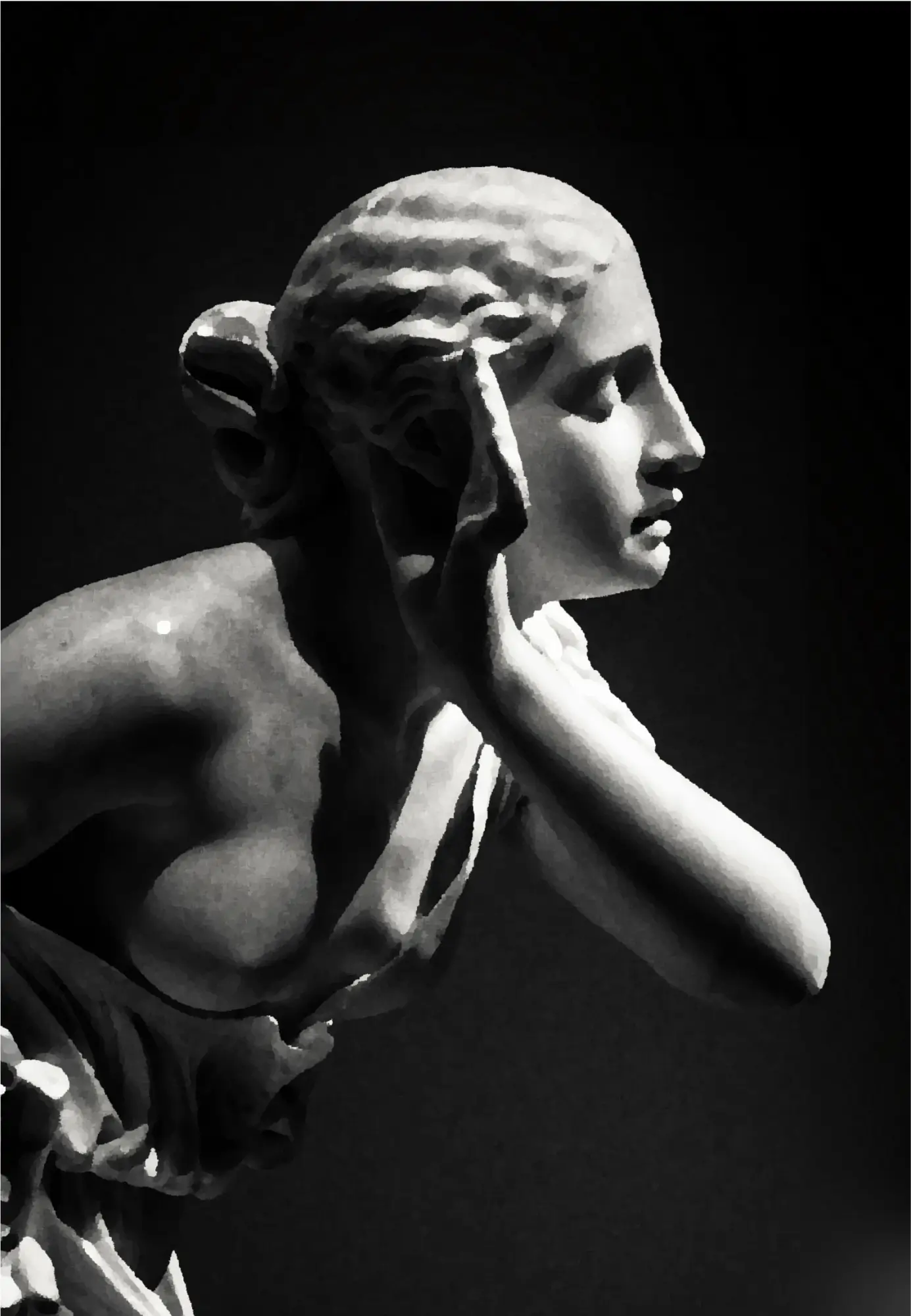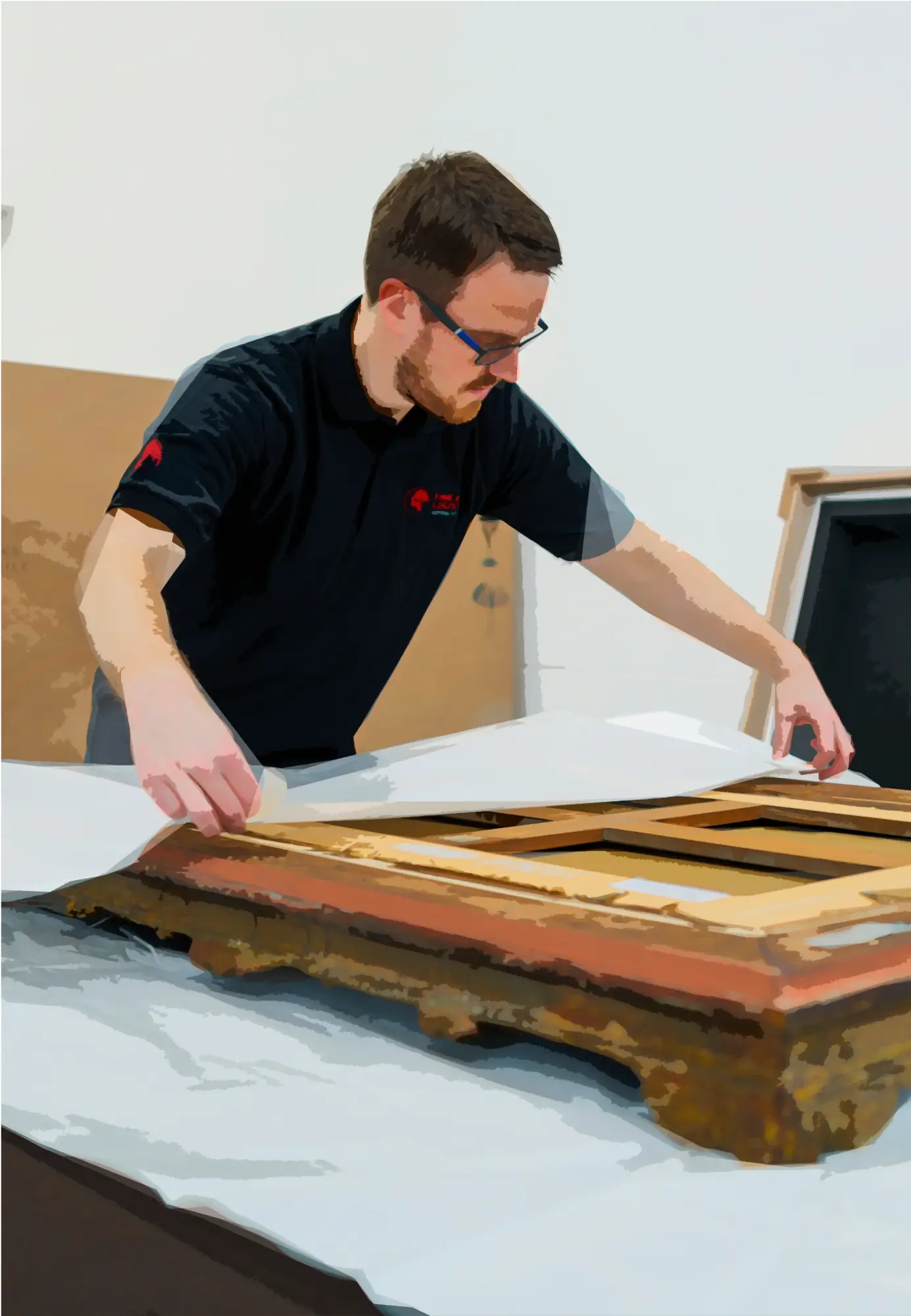Building a collection and investing in art will inevitably lead to participating in live or online sales at an auction house.
This type of sale, governed by specific codes, requires collectors to get acquainted with a world and a vocabulary that have become more complex over the course of history.
We offer you an insight into this world, which is as unknown as it is essential for anyone wishing to invest in the art market
Are you looking to invest in art?
Download our Auction Calendar
We have prepared a calendar for you which announces the sales taking place in the coming weeks.read more
The events include the theme of the sale, the name of the house or foundation and information about the lots and artists.
This tool, compatible with Google, Outlook and Apple, is intended to evolve! From now on, we will regularly add new auctions which will automatically synchronise with all the calendars.
To get it, fill in this form and receive the instructions for use (installation in 30 seconds)
"*" indicates required fields
Auctions: an ancient model.
Auctioning is a process whose first traces can be found in the historical tales of Greek antiquity (500 BC).
Under the Roman Empire, the process was extended to movable and immovable property. Pliny the Elder describes it in his writings (147 AC).
The "auctionarium atrium" had a mode of operation that is very similar to the one we know today. The legionaries regularly sold goods recovered "under the spear" and the citizens gave up inherited property that they no longer used.
This type of sale to the highest bidder was also practiced by Buddhist monks who sold the possessions of their deceased brethren in order to finance the construction of temples.
Today, auctions are conducted in two ways.
The so-called "English auction".
This is the most common model. It is mainly used for sales of wine, works of art or antiques.
Participants compete and have to bid higher than the competition to win the auction.
This type of open auction starts at a minimum price and stops when none of the participants wish to place a higher bid. The sale is then awarded to the last participants who placed a valid bid.

Auctions according to the Dutch model.
For Dutch auctions, the operation is the opposite of the most widespread model. The auction opens at a very high price. The auctioneer lowers the price in stages until a participant expresses his intention to buy the item at the last announced price.
It is a model that is commonly used when selling flowers, fish, tobacco or securities.
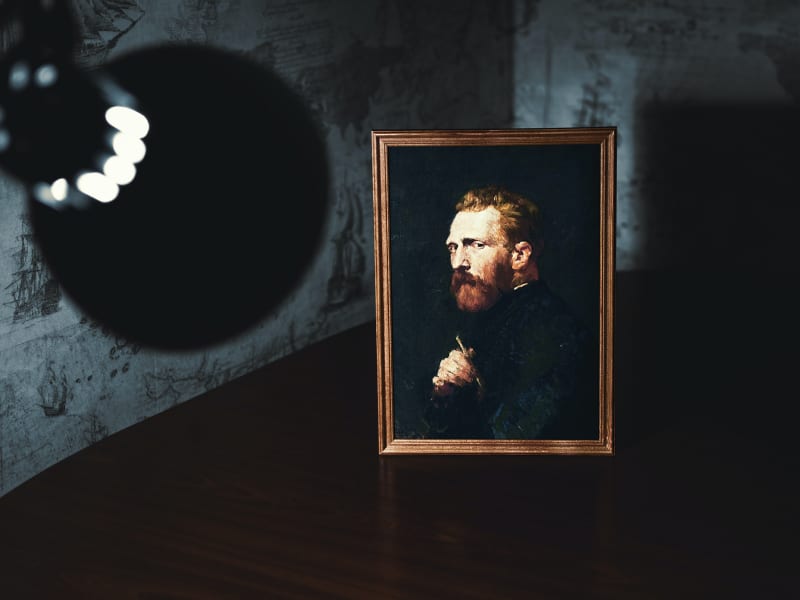
Sealed-bid auctions.
This type of auction is far less common in auction houses. This is a so-called "blind sale".
In this process, the participants do not know the amount offered by their competitor. A single fixed bid can be submitted and the best one wins the auction.
The stages of an auction.
Presentation.
First and foremost, the auction organiser publishes a catalogue with all the information about the exhibits on offer and typically organizes a physical display of the items for sale.
Participants are invited to have a brief look at the objects and the sales conditions. Usually, the display of the items takes place from 24 to a few hours before the start of the auction.
For the sale of prestigious or high-value items, sometimes auction houses organize travelling exhibitions to present the items to potential buyers who cannot travel to the sale location.
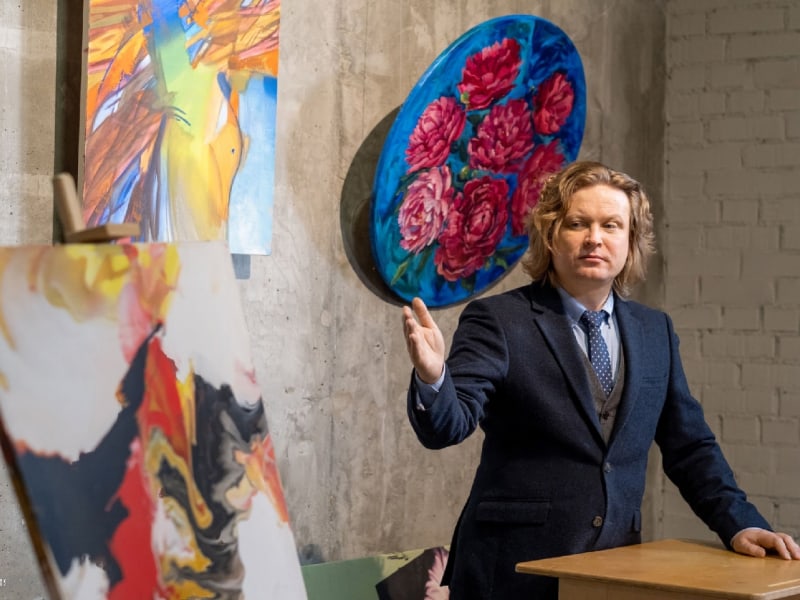
Registration.
After the presentation of the items, participants are invited to register with the auctioneer. They will give their names, addresses and telephone numbers before receiving a numbered identifier.
To be allowed to bid on high-value items, the auctioneer may also conduct a financial capability check of potential buyers.
Start of the auction.
The auction starts with a bell ringing. The auctioneer describes the object and announces the opening price. Participants bid until the highest price is reached.
End of the auction.
When no more bids are received, the hammer falls and the auctioneer awards the item to the last bidder. He takes possession of the object and any associated paperwork after having paid for it.
Due to the public nature of an auction, all information about sold and unsold items is available to everyone.
Are you looking to invest in art?
Download our Auction Calendar
We have prepared a calendar for you which announces the sales taking place in the coming weeks.read more
The events include the theme of the sale, the name of the house or foundation and information about the lots and artists.
This tool, compatible with Google, Outlook and Apple, is intended to evolve! From now on, we will regularly add new auctions which will automatically synchronise with all the calendars.
To get it, fill in this form and receive the instructions for use (installation in 30 seconds)
"*" indicates required fields
How to be well-prepared for an auction.
Attending as a spectator
Does this type of public sale appeal to you? Before participating yourself, it is recommended that you attend a few sales as an observer. These will be great opportunities to become familiar with the atmosphere and codes of a sales room.
Seek advice
Once you are ready to actively participate, it is imperative that you carefully study the auction catalogues. Take an interest in the artwork, its description, the artist, the advertised selling price and all the 5 parameters listed in our article for determining the price of a work of art.
In addition, consider approaching an independent art consultant to get an outside opinion on the artworks you are interested in, especially if it is a contemporary artist. This will ensure that you make an investment that will grow over time.
Attending on site
Although online auctions are becoming more and more common, beginners are strongly advised to visit the venue to inspect the physical works.
The emotional experience of the artwork in its physical form will be very different from the experience of any digital representation or reproduction.

Asking the right questions
By attending the event, you'll not only be able to see the work you are interested in, but more importantly, you'll have the opportunity to ask the organisers some fundamental questions.
This way, you can ask for additional information about the criteria used to define the price of a work, the buying commission rate applied by the auction house, or the number of bidders who are coveting the same piece as you.

Leaving your emotions behind.
The atmosphere in an auction room can be very uplifting. As the purchase of a work is above all motivated by emotions triggered by an object, it is not uncommon to get caught up and place a bid that is too high in relation to the item sold. It is important to stay cool and not to make emotional decisions. Set yourself a maximum purchase price, taking into account the non-negligible commissions, so that you do not feel sorry.
Don't forget the auction house premium.
The price you determine when bidding doesn't take into account the premium applied by the auction house. Thus, the amount of the proposed bid for the acquisition of a work of art will be increased by a certain percentage.
Plan for the storage of your artworks.
As your collection grows, it becomes imperative to ensure the proper conservation of your acquisitions. Building a partnership with a company specialised in the conservation of artworks is therefore highly recommended to ensure that your collection is stored in the best conditions.
Moreover, our company located in a free zone allows you to maximise the budget you allocate to the development of your collection, as you will benefit from a suspensive VAT regime.
Selling inherited works via auction.
It is not uncommon for heirs to become the owners of an artwork whose value is unknown and who wish to put it up for sale. In such cases, auctions are the best way to ensure you get the best price.
Having presented the piece to an expert, these owners can quite easily set a starting value that is considered fair by connoisseurs.
However, rather than placing it in a gallery where prospective buyerswill negotiate the price down, submitting it to auction will reverse the process and collectorswill compete and offer a higher price for its acquisition.
If you are in this situation and wish to sell an inherited painting as profitably as possible, simply contact an auctioneer and express your desire to have your artwork included in their catalogue.
For pieces signed by well-known artists, go directly to a reputable auction house to be sure to offer it to renowned collectors.
Are you looking to invest in art?
Download our Auction Calendar
We have prepared a calendar for you which announces the sales taking place in the coming weeks.read more
The events include the theme of the sale, the name of the house or foundation and information about the lots and artists.
This tool, compatible with Google, Outlook and Apple, is intended to evolve! From now on, we will regularly add new auctions which will automatically synchronise with all the calendars.
To get it, fill in this form and receive the instructions for use (installation in 30 seconds)
"*" indicates required fields
